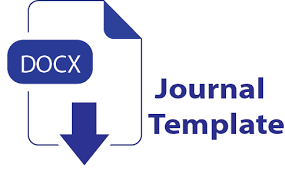Optimasi Teknik Pemeriksaan Computed Tomography Scanning Angiography Ekstremitas Bawah Dengan Teknik Bolus Tracking Pada Pasien Critical Limb Ischemic Di Rumah Sakit Dr. Hasan Sadikin Bandung
OPTIMIZATION OF COMPUTED TOMOGRAPHY SCAN ANGIOGRAPHY OF THE LOWER EXTREMITIES EXAMINIATION TECHNIQUE USING BOLUS TRACKING TECHNIQUE ON CRITICAL LIMB ISCHEMIC PATIENTS IN DR. HASAN SADIKIN BANDUNG HOSPITAL
DOI:
https://doi.org/10.38215/jtkes.v6i2.116Keywords:
angiography, bolus tracking, critical limb ischemic, computed tomography scanningAbstract
Computed Tomography Scan angiography of the lower extremities can be done quickly with high spatial resolution and a reduction amount of intravenous contrast and radiation exposure. In patients with peripheral arterial disease, this technique can be used to portray the arterial vascular of the lower extremities bilaterally, determine the amount of atherosclerotic disease and distinguish acute from chronic changes. The purpose of this research is to give radiographers and clinicians an appropriate reference and guidance on computed tomography scan angiography of the lower extremities examination to help them establish the diagnosis. The examination technique used by the researcher was the bolus tracking technique by placing the trigger in arcus aorta and popliteal aorta. The method used in this research is descriptive qualitative using random samples with diagnosis of critical limb ischemia.
Downloads
References
Barrett, et al. (2010). Ganong's review of medical physiology. New York: McGraw-Hill Medical.
Borgo, Mark, et al. (2015). Anti-fibrotic Potential of AT2 Receptor Agonists.Frontiers in Pharmacology (8): 564. doi: 10.3389/fphar.2017.00564.
Eroschenko,Victor P. 2010, Atlas Histologi diFiore: dengan korelasi fungsional/Victor P. Eroschenko., alih bahasa, Brahm U.Pendit., editor edisi Bahasa Indonesia, Didiek Dharmawan, Nella Yesdelita.—Ed.11. – Jakarta: EGC.
Gray, Henry (2008). Gray's Anatomy: The Anatomical Basis of Clinical Practice.
Edinburgh: Churchill Livingstone.
Hall, John E., Arthur C. Guyton (2016). Textbook of Medical Physiology 13th ed.
Philadelphia: Elsevier, Inc.
Ivanova, et al. (2015). LDL electronegativity index: a potential novel index for predicting cardiovascular disease. Vascular Health and Risk Management (11), 525-532. doi: 10.2147/VHRM.S74697.
Park, Kyoung -Ha dan Park, Woo Jung. (2015). Endothelial Dysfunction: Clinical Implications in Cardiovascular Disease and Therapeutic Approaches. Journal of Korean Medical Science.30(9):1213-1225. Doi https://doi.org/10.3346/jkms.2015.30.9.1213
Rohilla A, Ali S. 2012. Alloxan induced diabetes: mechanisms and effects. J Pharm Biomedic Sci (3): 819-21.
Rotzinger, David C., Lu, T., Kawkabani, A., Marques-Vidal, P., Fetz, G., Danaldo, S. (2020). Computed Tomography Angiography pada Penyakit Arteri Perifer: Perbandingan Tiga Gambar Teknik Akuisisi untuk Mengoptimalkan Peningkatan Vaskular – Uji Coba Terkendali Secara Acak. Frontiers in Cardiovascular Medicine. 7 (68), 1-11. doi: 10.3389/fcm.200.0006B.
Saladin, Keneth S. (2012). Anatomy & Physiology: The Unity of Form and Function, 6th Edition. New York: McGraw-Hill.
Storm, Jordan B. and Peter, Libby (2011). Atherosclerosis. In: Pathophysiology of Heart Disease:a collaborative project of medical students and faculty Fifth edition. Philadelphia: Wolter Kluwer.
Van De Graff, Kent (2009). Schaum's Outline of Human Anatomy and Physiology, Third Edition. New York: McGraw-Hill.
Downloads
Published
Issue
Section
License
Copyright (c) 2023 Jurnal Teras Kesehatan

This work is licensed under a Creative Commons Attribution-ShareAlike 4.0 International License.
Authors who publish articles in Jurnal Teras Kesehatan agree to the following terms:
- Authors retain copyright of the article and grant the journal the right of first publication with the work simultaneously licensed under a CC-BY-SA or the Creative Commons Attribution–ShareAlike License.
- Authors can enter into separate, additional contractual arrangements for the non-exclusive distribution of the journal's published version of the work (e.g., post it to an institutional repository or publish it in a book), with an acknowledgment of its initial publication in this journal.
Authors are permitted and encouraged to post their work online (e.g., in institutional repositories or on their website) prior to and during the submission process, as it can lead to productive exchanges, as well as earlier and greater citation of published work (See The Effect of Open Access)












